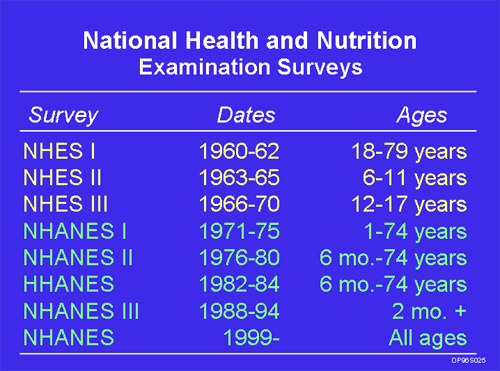
The National Center for Health Statistics (NCHS) was founded in 1960 under the authorization of the National Health Survey Act of 1956 passed by the 84th Congress. This health act stipulated that health information be continuously collected to monitor the health status of the US civilian non-institutionalized population.
The first three National Health Examination Surveys (NHES I, II, and III) were conducted between 1960 and 1970, each with its own specific age groupings as a target populations. The NHES I focused on adults ages 18-79 years, NHES II on children ages 6-11 years, and NHES III on youths ages 12-17 years old.
The first three NHES surveys collected information on the prevalence of certain medically defined illnesses and the distribution of a variety of physical, physiological, and psychological measurements. The surveys also collected demographic and socioeconomic data, which provided essential context for analyzing the health status measurements.

Between 1971 and 1975, a large nutrition component was added to the fourth series (and all subsequent) surveys as a result of the 1967 McGovern/Dole Senate hearings on Hunger in America. The name of the survey was thus changed to the National Health and Nutrition Examination Survey (NHANES). In addition, data collection was broadened to include a representative sample of the entire U.S. population ages 1-74 years old. NHANES II was conducted between 1976 and 1980, and NHANES III between 1988 and 1994. Since 1999, NHANES has collected data on a continuous, rather than periodic, basis.
In addition to the nutrition component added to the original surveys, the NHANES series also has incorporated additional examination components (in certain years), as well as an environmental health component.
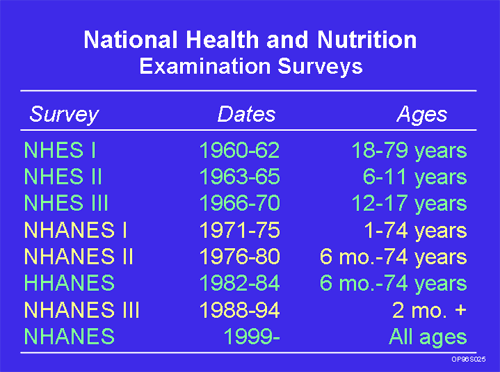
A special study of Hispanic populations (HHANES) was conducted in 1982-84, focusing on the health issues and topics that are common in the largest U.S. Hispanic populations (i.e. Mexican-, Cuban-, and Puerto-Rican Americans).
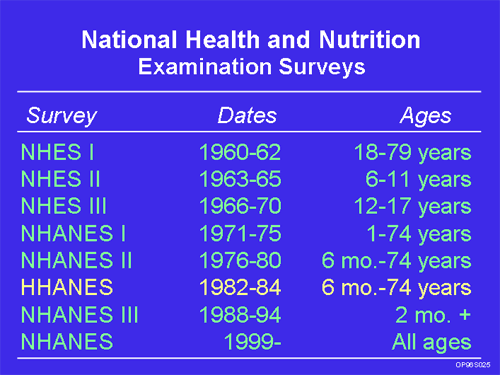
The continuous NHANES program provides increased flexibility in changing survey contents to meet emerging needs. It also allows for increased timeliness in releasing bi-annual datasets and estimates on topics of public health interest.
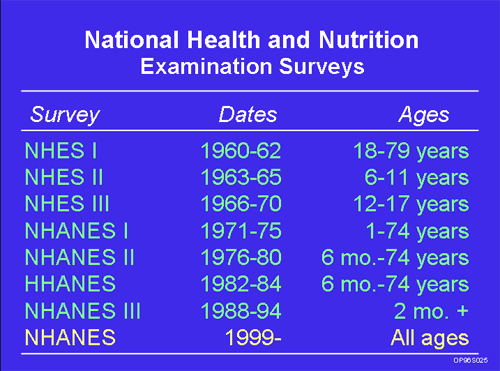
An outline of the continual planning, data collection, and data release schedule for these surveys is provided below:
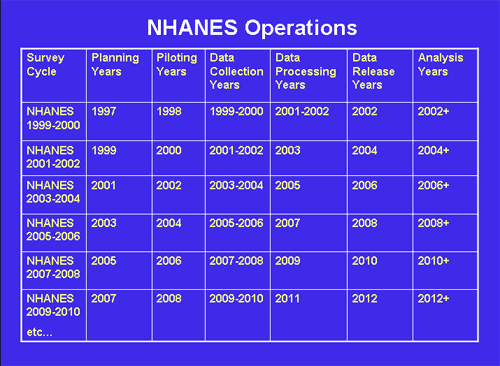
Since it's inception, the basic survey goal of monitoring the health status of the US population has been refined as well as expanded. The current goals of the NHANES survey are to: